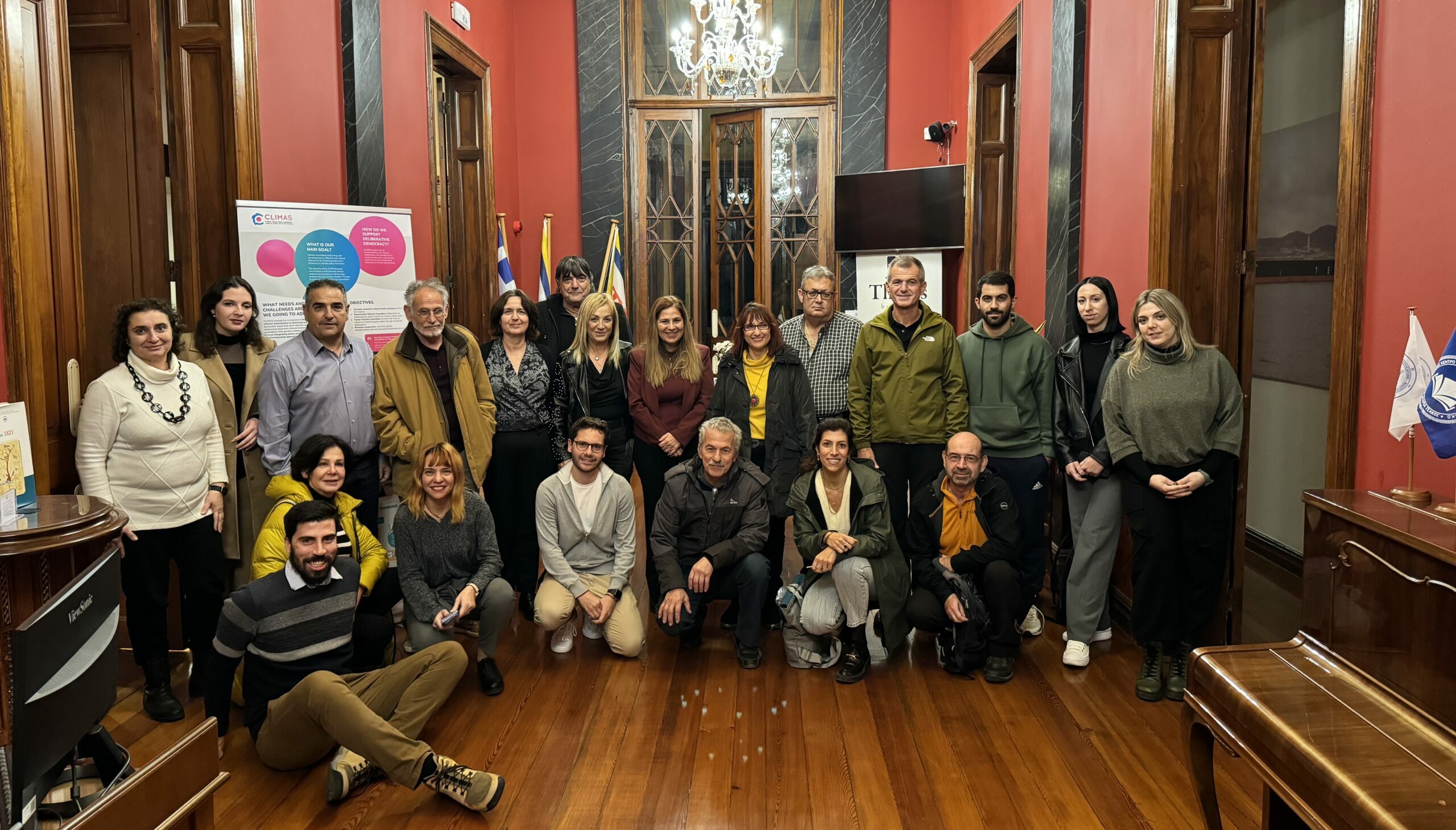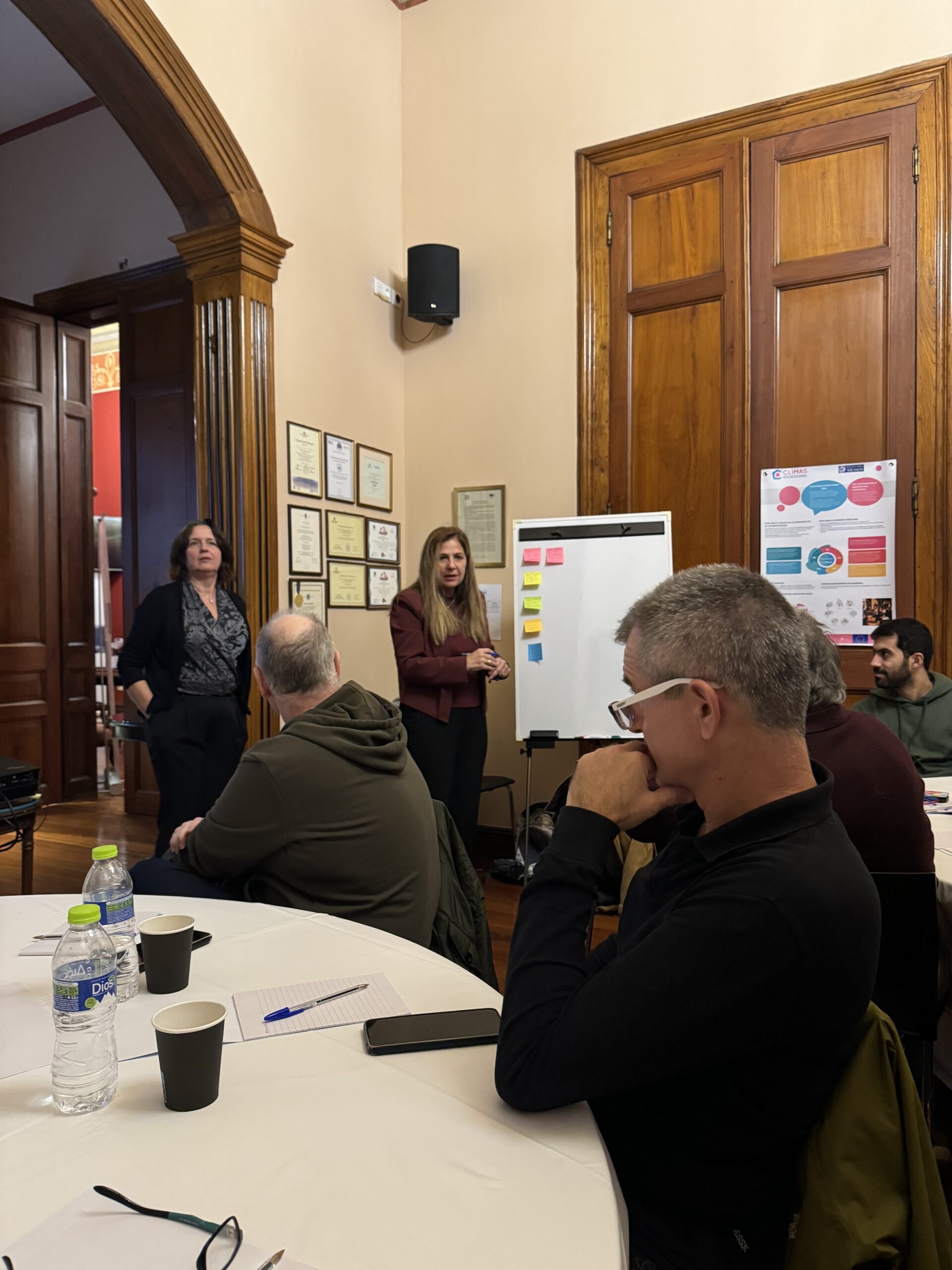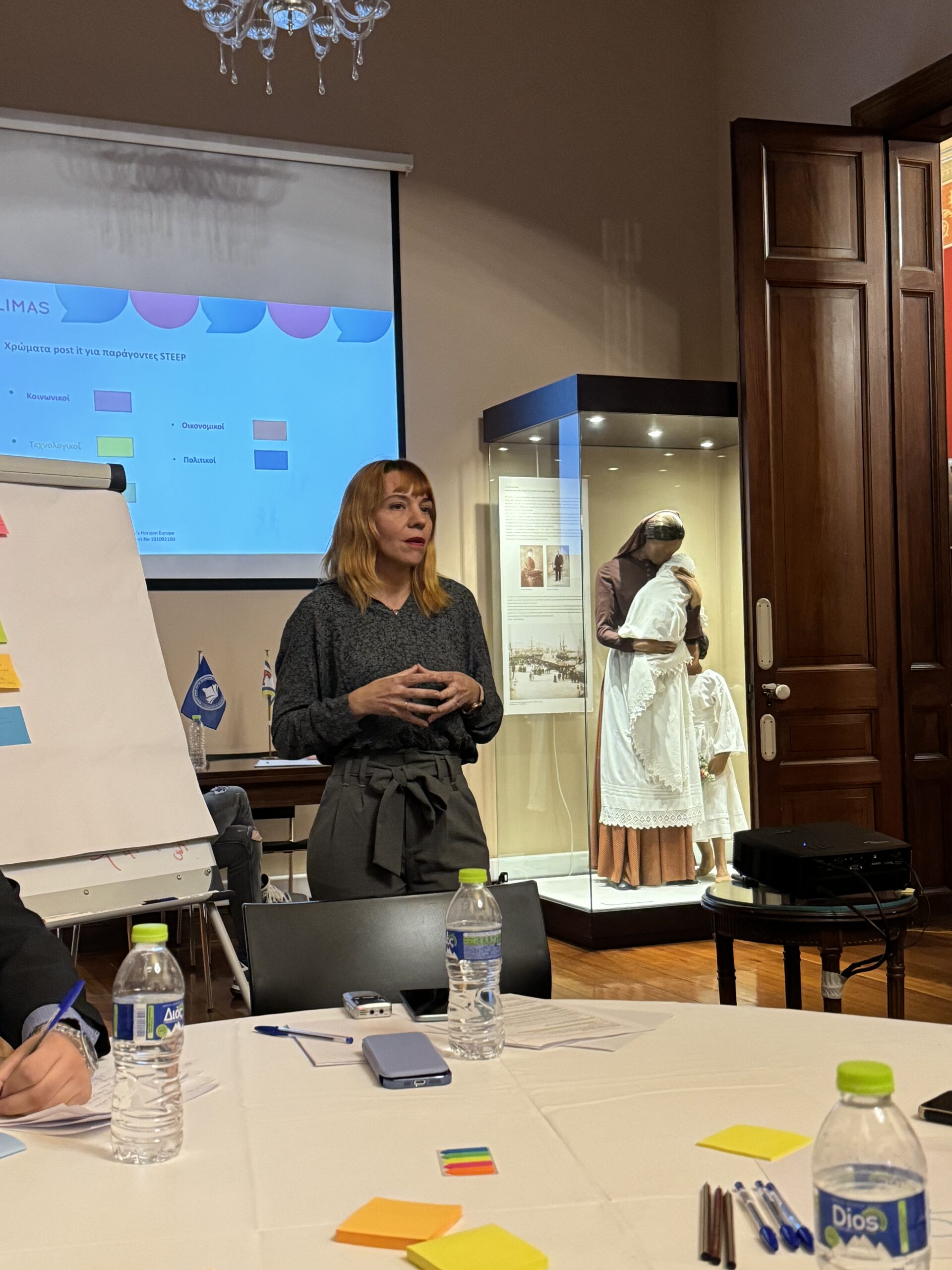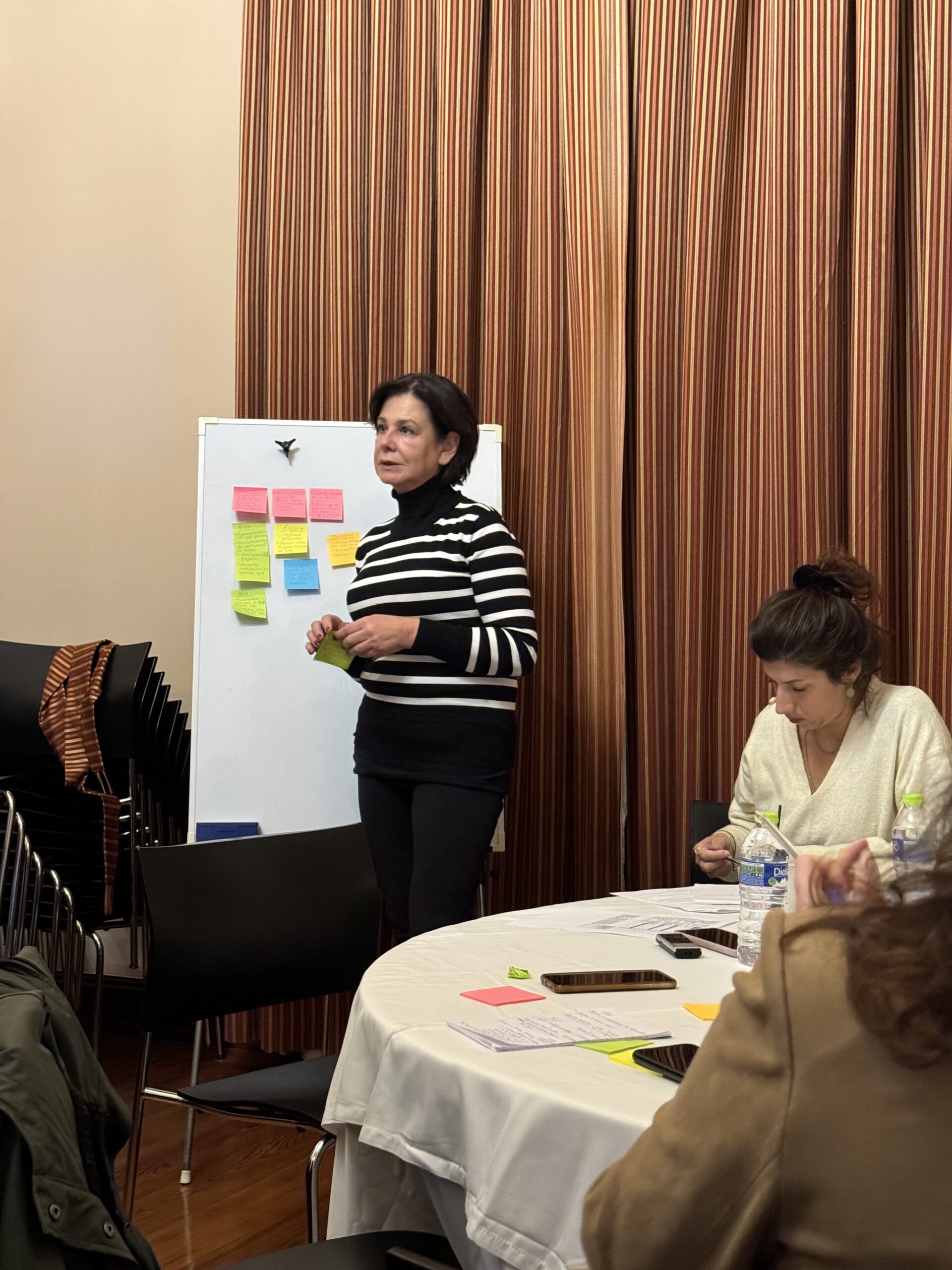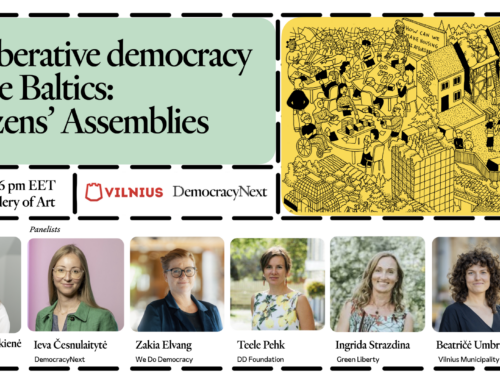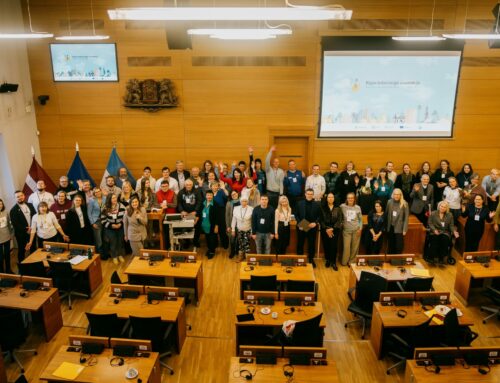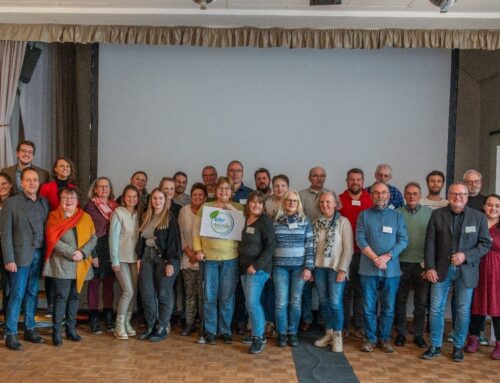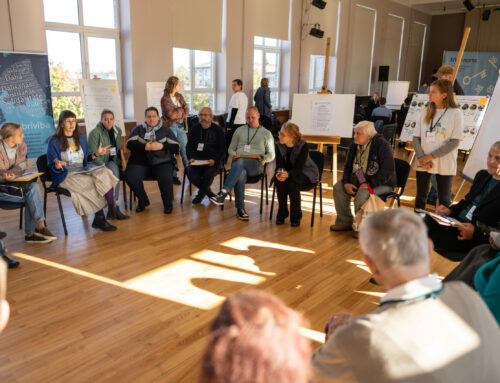The inaugural meeting of the Chios Living Lab, Greece was held on November 29th, 2023. It focused on a collaborative exploration envisioning the island’s resilience against climate change until 2050.
Facilitated by the EU-funded CLIMAS project under Horizon Europe, participants delved into key factors, relationships, and boundary conditions using a citizen collaboration method for scenario building. This workshop successfully collected, evaluated, and combined key drivers to create future scenarios, ensuring high-quality assessments.
This article aims to briefly present the contents of the future scenario building workshop conducted on November 29, 2023. This pilot activity took place at the Chios Living Lab and was hosted by the University of the Aegean. The article will include a summary of:
- Preparation for the workshop;
- Participants of the workshop;
- Minutes of each part of the workshop;
- Conclusion.
1. Preparation for the workshop.
An essential step in conducting a workshop involves meticulous preparation. In the case of the pilot activity at the Chios Living Lab, a dedicated internal team at the University of the Aegean initiated preparations a month prior to the workshop. The workshop structured this based on guidelines developed by VUB to facilitate citizen collaboration in constructing future scenarios. They gleaned further guidance from minutes of the workshop conducted at the Vilnius Living Lab on October 8, 2023.
The preparatory steps at Chios LL outlined the following:
- Step 1: Guidelines Review. Chios Living Lab received and comprehensively reviewed VUB’s guidelines, ensuring clarity in understanding the future scenario-building methodology. Queries were raised and clarified to align with the purpose of the workshop;
- Step 2: Internal Team Collaboration. An enthusiastic internal team at the University of the Aegean engaged in discussions to grasp the guidelines’ essence. They strategized to adapt the Living Lab steps, considering challenges and customizing content per VUB’s guidelines;
- Step 3: Material Development. They prepared crucial pre-workshop material in Greek, covering the climate crisis, regional challenges, CLIMAS project scope, objectives, and methodology. This material aimed to engage potential participants and prompt pre-workshop reflection;
- Step 4: Participant Engagement. Efforts focused on recruiting a diverse group of participants based on the Quadruple Helix model. They sent invitations accompanied by detailed information, reinforcing them with personal engagement via phone or in-person communication;
- Step 5: Creating the Workshop Environment. They set up a conducive environment for open discussions and engagement. This included selecting an appropriate venue, arranging seating, setting up technical requirements, providing resources, and organizing refreshments to ensure participant comfort and involvement.
2. Participants of the workshop
The workshop aimed for a diverse representation by inviting participants from various backgrounds and affiliations, ensuring a comprehensive perspective during future scenario-building.
The workshop involved 18 participants, a balanced mix of 8 females (44%) and 10 males (56%), representing citizens, public authorities, business, and academia. The citizen group, the largest contingent, comprised individuals from various backgrounds residing in different areas of Chios, including maritime communities, education, environmental NGOs, the military, and medicine. Public authorities, the second-largest group, included representatives from the municipality, regional units, and specific divisions. Business sector participation included members from hoteliers, mastic growers, and an engineer working on energy certificates. The academic representation was by two PhD candidates from the University of the Aegean, alongside three facilitators, a technical assistant, a secretariat assistant, and three note-takers, summing up to a total of twenty-six members involved in the workshop.
Below the list of participants’ from different stakeholder groups and respective affiliations:
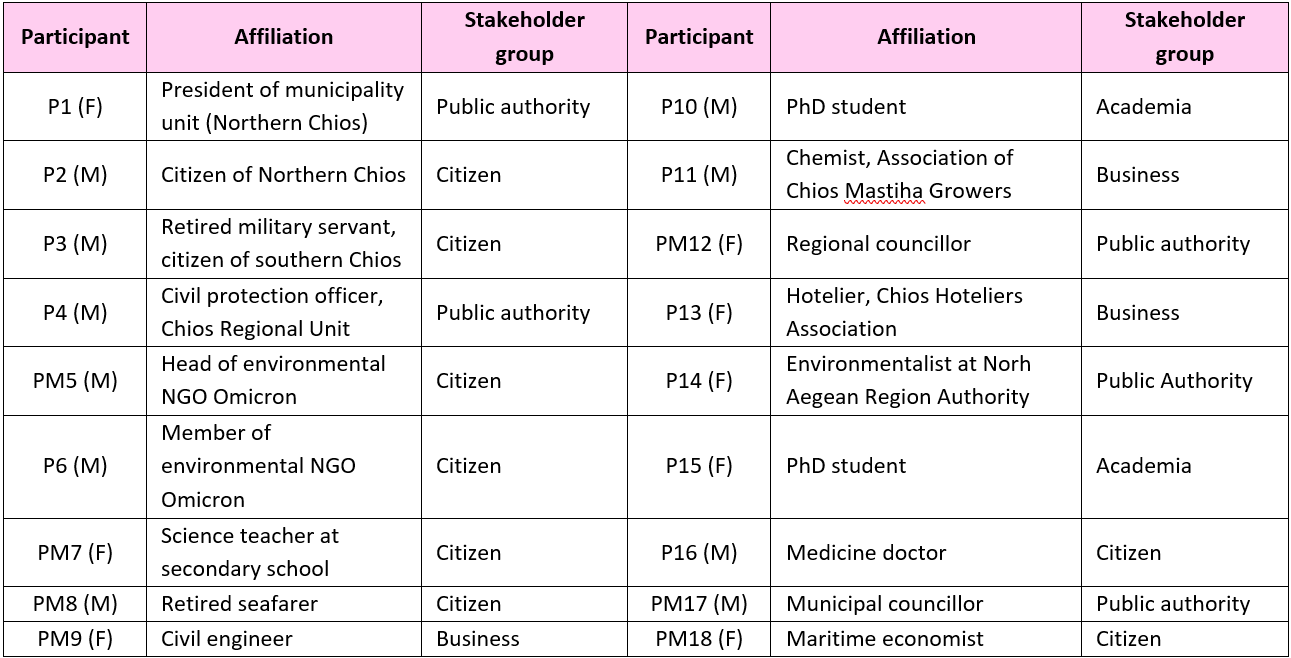
Figure 2. List of participants with their respective affiliations.
3. Minutes of each part of the workshop
3.1 Welcome, Warm-up and Agenda
The session began with a warm welcome from the facilitators. Dr. Amalia Polydoropoulou, from the University of the Aegean, outlined the overall goals and strategies of the CLIMAS project. A comprehensive overview of the agenda was then presented to ensure that all participants understood the day’s program and workshop objectives.
Next, Anna Maria Kotrikla introduced the methodology of future scenario building. Specifically, this methodology analyses long-term developments ranging from 10 to 30 years, in line with the EU’s goal of achieving climate neutrality in 2050 as part of the European Green Deal. The steps of the methodology were outlined and discussed, accompanied by illustrative examples to simplify the concepts. In addition, participants were encouraged to introduce themselves and share personal experiences of extreme events that made them reflect on the meaning of cultivating a climate resilient society.
3.2 Identification of key drivers / Critique phase
Participants were divided into three different groups with the task of identifying factors crucial to building a climate resilient society. Each group, consisting of 6 members with different backgrounds, engaged in discussions supported by facilitators from the University of the Aegean. The main question was, “What are the essential factors for a society to be resilient to climate change?“
Using methods such as STEEP analysis and brainstorming, the groups independently identified influential factors related to climate resilience. Then, in a plenary session facilitated by Amalia Polydoropoulou, Anna Maria Kotrikla, and Sandy Fameli, the groups presented their findings.
- Figure 3. A photo of a facilitator’s intervention
- Figure 4. A photo of a facilitator’s intervention
- Figure 5. A photo of a facilitator’s intervention
To streamline the extensive list of factors, specific criteria were applied:
-
- Direct system impact, such as reduction of greenhouse gas emissions that affect climate systems;
- Indirect influence through other elements, such as education modifying individual behavior;
- Degree of uncertainty, assessing the predictability and reliability of factors.
Through collaborative agreement, the workshop narrowed down 10 key factors crucial to a climate resilient society. These factors include water conservation, sea level rise, temperature rise, population patterns, regulatory frameworks, societal values, transportation innovation, technological advancements, energy footprint, and resource consumption.
These factors, thoroughly defined and detailed, form the groundwork for understanding and addressing the critical elements necessary for fostering climate resilience in societies.
3.3 Scenario envisioning phase
The task at hand was to create future scenarios based on previously identified key drivers, aiming for scenarios that are neither excessively narrow nor overly optimistic, but rather reflect the intricacy and uncertainty of the future. The goal was to ensure consistency, comprehensiveness, and coherence in the scenarios.
What were the expected results?
Anticipated outcomes included a compilation of 6 future scenarios or projections. The process involved utilizing brainstorming and the morphological box method to explore various combinations of factors or drivers, fostering the creation of a spectrum of scenarios based on different element combinations.
In group work, participants selected 3 key drivers, created 2 projections for each, and developed at least 2 scenarios by combining specifications from the morphological box. The results, represented as morphological boxes, were documented for each group. The morphological boxes of the 3 teams are presented below:
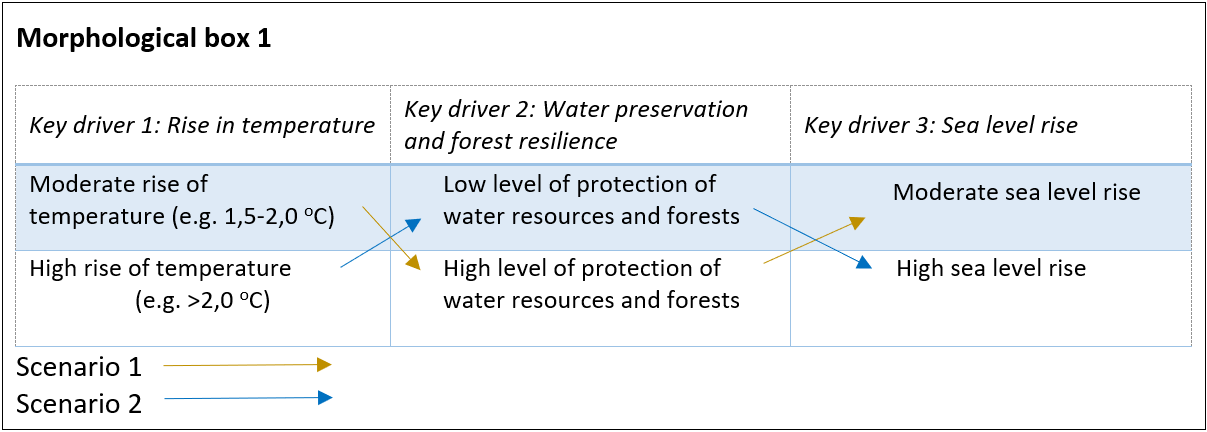
Figure 6. Morphological box of team 1

Figure 7. Morphological box of team 2

Figure 8. Morphological box of team 3
3.4 Identifying and drafting evaluation quality criteria for scenario
In the critique phase, the goal was to identify and define key criteria for evaluating different future prospects. The intention was to align these criteria with the goals, specific purposes, and context of the scenario-building process.
The expected outcome of this phase was to generate a list of criteria for evaluating different future perspectives. Facilitators clarified the goals and the groups worked together to identify criteria for evaluation. Each group presented and then weighted the identified criteria, limiting them to a maximum of 10.
The common criteria identified — cost-effectiveness, environmental impact, plausibility, and comprehensiveness — were considered critical in evaluating the effectiveness and practicality of the various future prospects.
3.5 Conclusion
At this stage, Amalia Polydoropoulou summarizes and reviews the workshop results, then proceeds to explain the next steps in the scenario-building process to inform the participants, such as the scenario prioritization process, which includes conducting a survey.
